How to properly wrap a badminton racket handle?
02 Mar, 2023How to properly wrap a badminton racket handle?
28 Nov, 2022 - Rackets
Instructions on How to Hold a Badminton Racket Correctly and Correctly
Most players when starting to practice badminton often focus on badminton techniques but forget that how to hold a badminton racket is also one of the important factors.
Especially affecting your game performance, as well as helping you not to accidentally injure your arm.
This article will summarize all the most standard and correct ways to hold badminton rackets for you.
1/ Why should you hold a badminton racket properly?
For those who do not have much experience or who are just starting to play badminton, they will probably think that this is a too simple technique, who does not know.
But really, how to hold a technical racket is the first and most important step for you to play well in this sport, why is that?
How to hold the racket properly, properly
When you hold the badminton racket improperly, your badminton hitting ability is also greatly limited in reflexes, hitting power (not strong) until the feeling of the shuttlecock is also worse.
When you hold the racket the wrong way, it is very easy to lead to the case that your wrist can be injured.
On the contrary, if you do this movement right from the beginning, in addition to overcoming the above two disadvantages, your progress when hitting badminton can be said to be seeing a clear change through each training session.
2/ The correct technique of holding badminton rackets
2.1 How to hold a V-grip (v-grip) racquet
This is considered the most basic way of holding a badminton racket. First, keep your dominant hand in a position like you are about to shake hands. Fingers pointed straight ahead. Then, place the racket between the palms so that the racquet head is perpendicular to the ground and gently squeeze the fingers.
You should not hold the racket too tight. Gently grasp the racquet handle so that you can move your wrist flexibly and move the racket in the most comfortable way.
You should only hold the racket tightly when making shuttlecock strokes. Ring and little fingers will help prevent the racket from slipping out of your hand. If held correctly, your thumb and index finger will form a V shape, which is also why this grip is also called a V-grip.
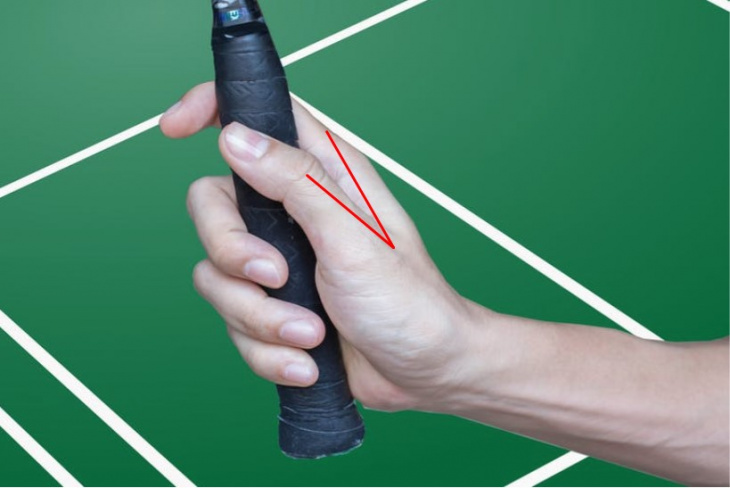
2.2 How to hold a backhand thumb grip
When playing badminton, your opponent can hit shuttlecocks from many different directions, so you need to be able to change your grip flexibly from forehand to backhand to respond to these shots. . With a backhand grip, you will easily make shots to the other side of the opponent's court.
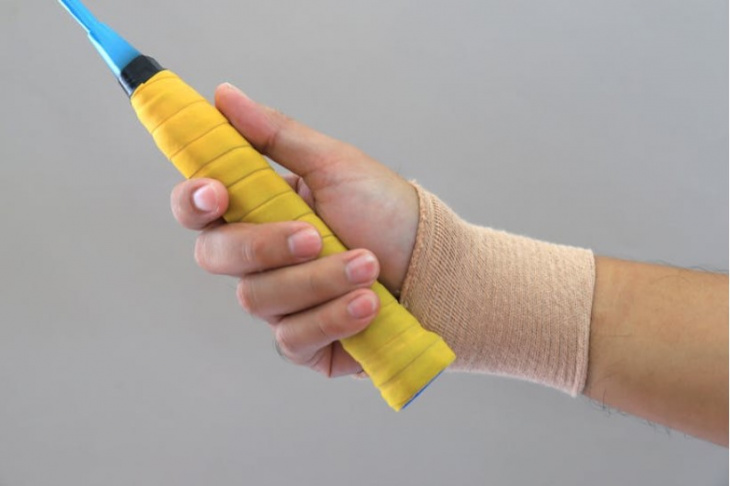
You must ensure that the rubber is always facing the incoming ball to be able to successfully respond to the opponent's shot. The thumb should be placed exactly on the edge of the grip parallel to the racquet. The thumb is the primary resource to help with backhand shots. The remaining fingers gently hug the handle.
Note: If your thumb is in the same direction as the frame and the rubber, you are holding it the wrong way. This way of holding a badminton racket will cause you to damage the shuttlecock a lot.
2.3 How to hold a hammer grip badminton racket
The hammer grip is very useful when you are doing jump smashes. Do you remember how to hold a hammer? You just need to gently squeeze your fingers into the handle of the racket to successfully perform this grip. However, you need to be careful not to let any of your fingers be covered by the remaining fingers.
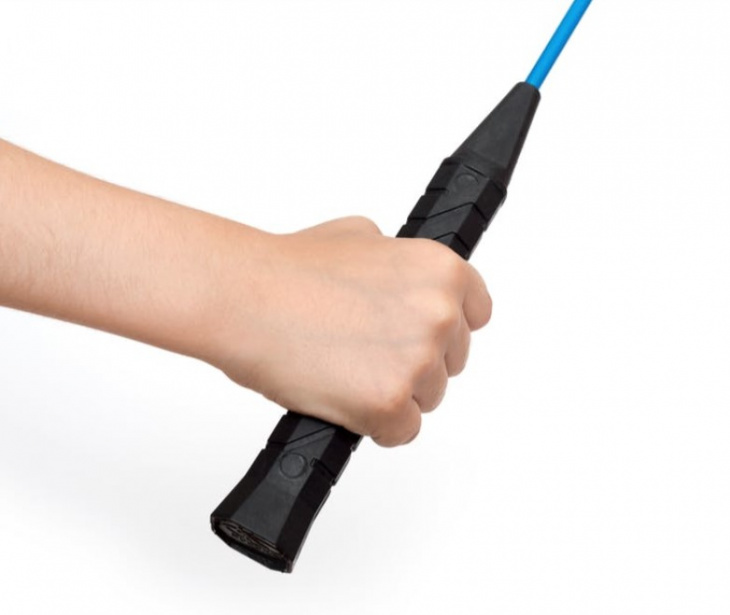
Hammer grip badminton racket
You can start the shuttle by holding the forehand racket. Then, while swinging your arms and jumping up, you rotate the racquet handle quickly to form a hammer grip. Finally, you tighten the grip when making the shuttle.
2.4 How to hold a pan-handle badminton racket (net tap grip or pan hold grip)
The reason for the name is because the way you hold the racket in this case will be similar to the way you hold a cooking pan.
This is the grip required when responding to your opponent's near-net shuttles. At the right time, before the ball descends, you need to make pats to save the ball.
First, relax your fingers. Then, gently hold the racket with your fingers so that there is still a gap between the handle of the racket and the palm. You will use your thumb, index finger and middle finger to move the racket.
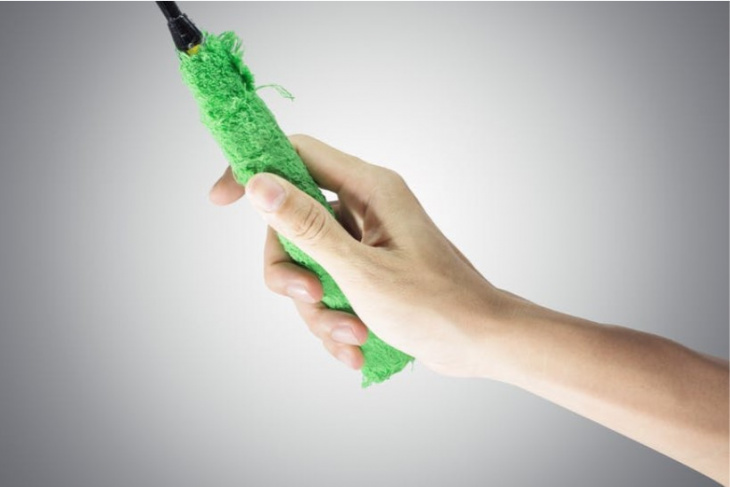
2.5 How to hold a badminton racket when attacking Smash
Many of you when you are new to badminton often wonder about how to hold a badminton racket when hitting the shuttlecock. In fact, the way to hold the badminton racket when attacking Smash (jump smash) is no different than when you hold the racquet for forehand.
The key point in holding the racquet when hitting the shuttlecock is that your thumb needs to be in the position to be able to create the smashing force and hold the badminton racket body firmly.
2.6 How to hold a racket when defending in badminton
When on the defensive, get ready in a forehand grip. Depending on the direction of the bridge to the left or the right, we will counterattack with smashes or cicadas. So when defending in badminton, in addition to guessing the direction of the shuttle, you need to hold the racket properly.
3 The wrong ways to hold badminton rackets
Here are the mistakes that are often encountered, especially for new badminton players, please fix these wrong ways of holding the racket right from the start, otherwise it will be easy to form a habit in the long run.
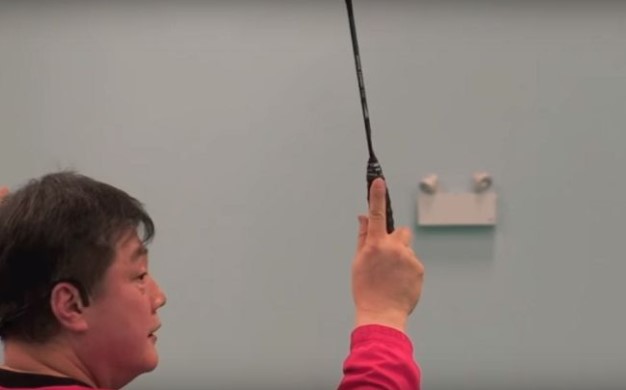
Do not put your index finger along the shaft of the racquet
New female players often use the way to hold the racket is to put the index finger along the shaft of the racket, this will make the power of badminton hit a lot weaker, and it is also very easy to lead to injuries with your index finger. Your index finger should be naturally bent and hugging the racquet handle.
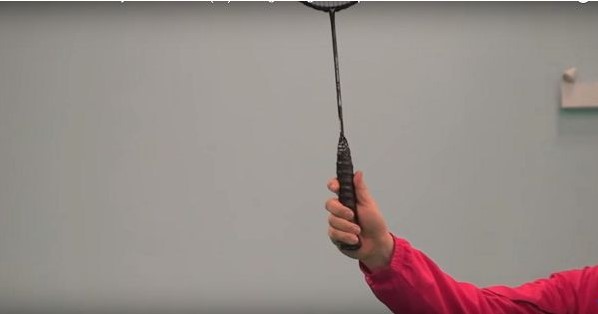
The thumb must not cover any other fingers
How to Hold a Badminton Racket Correctly, Correctly is one of the basic exercises that you need to master before moving on to other advanced exercises. Other badminton techniques are more difficult, but if you hold them incorrectly, you will not promote that technique properly, in addition, you may experience bone and joint injuries. Good luck with this exercise!